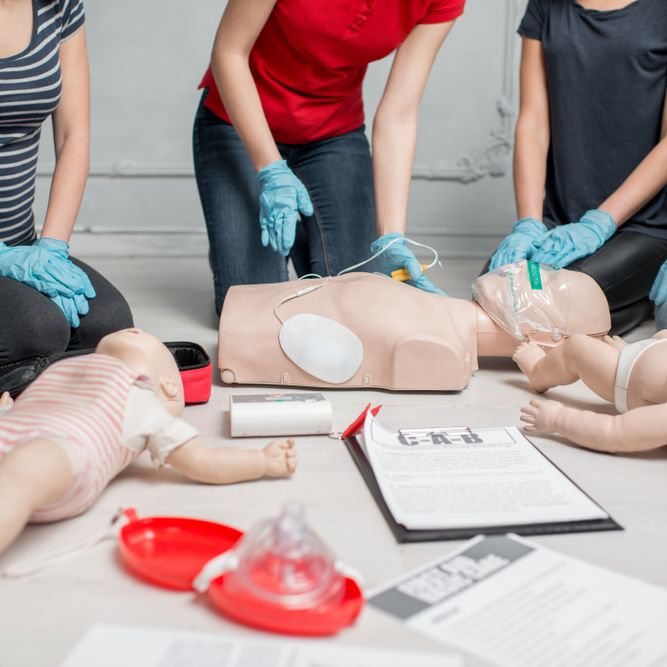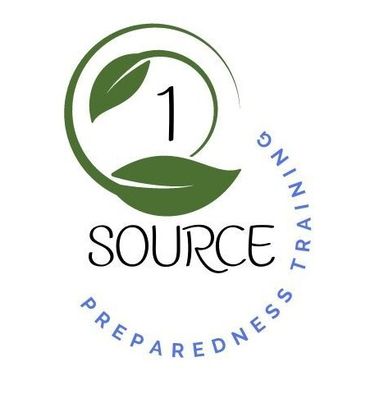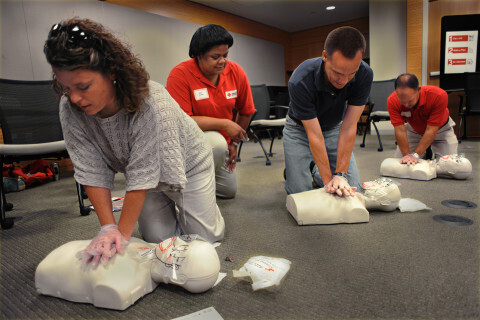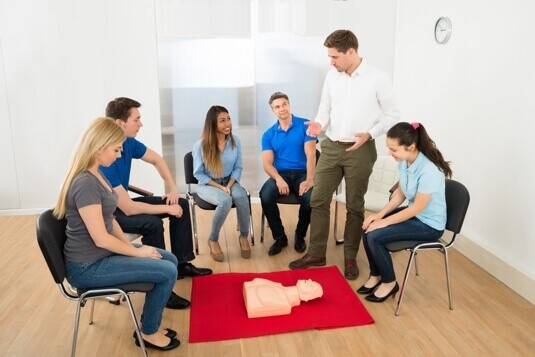06 OCT 2025
CPR for All Ages: Key Differences Between Adult, Child, and Infant CPR
Whether you’re a parent, teacher, or first responder, understanding age-specific CPR saves lives and builds confidence in emergency situations. Learn the essential differences.
CPR for All Ages: Why Technique Matters
CPR is one of the most powerful lifesaving skills anyone can learn, and the proper method depends on the age of the person in distress. Adults, children, and infants have different body structures and causes of cardiac arrest, so your technique must adapt to each situation.
Adult CPR:
- For adults (ages 8 and older), focus on strong, deep compressions to restore blood flow.
- Use the heel of one hand on the center of the chest (between the nipples), place your other hand on top, and push hard and fast.
- Compress at least 2 inches (5 cm) deep at a rate of 100–120 compressions per minute - think of beat of songs like “Stayin’ Alive.”
- After 30 compressions, give 2 rescue breaths by tilting the head back, lifting the chin, and sealing your mouth over theirs.
If an AED (automated external defibrillator) is available, use it immediately and follow the prompts.
Adult cardiac arrest is usually heart-related, so high-quality compressions and early defibrillation are key.
Child CPR:
- For children (ages 1–8), the approach is gentler but still firm.
- Place one hand on the center of the chest; for larger children, use both hands.
- Compress about 2 inches (5 cm) deep at a rate of 100–120 per minute.
- Use a ratio of 30 compressions to 2 breaths (or 15:2 if two rescuers are present).
Children often experience cardiac arrest from breathing problems or choking, so effective rescue breaths are especially important.
Make sure each breath causes the chest to rise slightly - too much air can cause injury.
Infant CPR:
- Infant CPR (under 1 year old) must be done with precision and care.
- Use two fingers just below the nipple line on the center of the chest.
- Push down about 1.5 inches (4 cm) at a rate of 100–120 compressions per minute.
- Give 2 gentle rescue breaths after every 30 compressions, or 15:2 if two rescuers are present.
Use only enough air to see the baby’s chest rise - their lungs are tiny and fragile.
Since most infant cardiac arrests result from respiratory issues, rescue breathing is the most crucial part.
Why Age-Appropriate CPR Saves Lives
CPR success depends on adapting your force and technique to the victim’s size and physiology.
Adults need full-depth compressions for strong circulation.
Children need moderate force with balanced breaths.
Infants need delicate, precise actions to prevent injury.
The faster you recognize these differences and begin CPR, the greater the chance of survival. Quick action can double or even triple survival rates when combined with an AED and emergency medical help.
Whether at home, at work, or in public, knowing how to perform age-appropriate CPR empowers you to take lifesaving action when every second matters. Get trained through the American Heart Association (AHA) or Red Cross, and keep your certification up to date.
🗓️ Ready to schedule a group training session?
Contact 1 Source Preparedness Training today to get a quote or lock in your team’s next CPR AED First Aid class in Huntsville!
📧 info@1sourcept.com | 📞 877-722-1CPR (877-722-1277)
📍Serving:
North Alabama – Huntsville · Madison · Decatur · Florence · Athens · Scottsboro
Northwest Indiana – Gary · Hammond · Merrillville · Crown Point · Valparaiso · Portage · Michigan City
Stay prepared. Stay safe. Stay trained.
Keywords: CPR for all ages, adult CPR, child CPR, infant CPR, CPR certification, how to perform CPR, CPR technique, CPR training, lifesaving skills, emergency response, first aid training.




